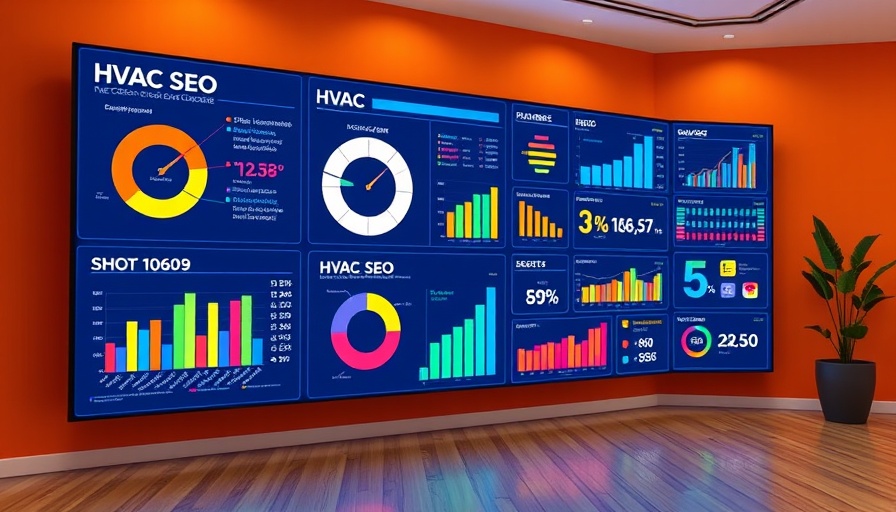
Unlocking HVAC Success through SEO: The Essential Guide
In today's digital landscape, HVAC companies cannot ignore the power of Search Engine Optimization (SEO) if they hope to thrive amid fierce competition. With over 90% of consumers utilizing search engines to identify local HVAC services, understanding the nuances of SEO is paramount for increased visibility, customer engagement, and revenue growth. This article delves into critical HVAC SEO statistics, local SEO trends, and innovative strategies that HVAC businesses must harness in order to secure a competitive edge.
The Rising Importance of HVAC SEO
According to recent studies, an overwhelming 93% of online experiences begin with a search engine, emphasizing the critical role of SEO in attracting customers. In the HVAC sector, local SEO is particularly significant; 46% of all Google searches are aimed at retrieving local information.
Additionally, 99% of consumers gather information about local businesses online before making a purchase decision, underscoring why a robust online presence — supported by effective SEO — is essential. Companies that optimize their websites can expect to receive 3.5 times more leads than those that do not, presenting a clear opportunity for growth.
Harnessing Local SEO Best Practices for HVAC Businesses
Local SEO encompasses strategies geared towards enhancing visibility in local search results. This aspect is vital for HVAC companies that rely heavily on local clientele. For instance, businesses listed in Google’s local pack see a staggering 700% increase in clicks over those not featured. Implementing localized content is crucial; optimizing website elements such as your Google Business Profile, NAP (name, address, phone number), and engaging with customer reviews will dramatically enhance your local visibility.
Embracing the Mobile-First Era
Mobile optimization has surged in importance as most consumers now search for services using their mobile devices. In fact, 78% of location-based mobile searches culminate in offline purchases, reinforcing the need for HVAC businesses to adopt mobile-friendly strategies. This means having a responsive website design, fast load speeds, and easily navigable interfaces are no longer optional — they are necessary for success.
Latest Trends in HVAC SEO
As we look toward the future, several HVAC SEO trends are emerging that warrant attention:
- Voice Search Optimization: With 50% of U.S. residents utilizing voice search, HVAC companies should adapt their content to be more conversational, which increases the likelihood of ranking highly in voice search results.
- Visual Search Implementation: Leveraging visual search capabilities can set HVAC companies apart. Optimizing images and using appropriate tags can capture the attention of potential customers seeking service images.
- AI in Digital Marketing: The role of artificial intelligence is expanding in digital marketing. AI tools can analyze vast amounts of data, helping businesses tailor their content based on user behavior, ultimately enhancing SEO performance.
Utilizing Analytics for Continuous Improvement
An effective HVAC SEO strategy relies on ongoing analytics and data reporting. Understanding customer engagement through metrics helps businesses refine their strategies to meet evolving consumer behavior. Companies should leverage tools like Google Analytics to interpret traffic patterns, leading to data-driven decisions that improve site optimization and marketing ROI.
Content Marketing and SEO: The Perfect Pair
Implementing a strong content marketing strategy in conjunction with SEO practices can enhance visibility and establish authority in the HVAC industry. HVAC companies that maintain active blogs can receive 55% more web visitors. Producing high-quality, informative content that answers common customer queries can contribute significantly to establishing a brand as an industry authority.
Engaging with Customers through Enhanced Experiences
Improving the overall user experience on an HVAC website is crucial for converting traffic into leads. Google’s Core Web Vitals highlight the need for fast loading times and interactive site capabilities. Enhancing site speed, navigation, and mobile accessibility directly influences Google’s ranking algorithms, thus playing a vital role in an HVAC business's success.
Conclusion and Call to Action
As the HVAC industry continues to evolve, businesses that prioritize SEO will undoubtedly have a competitive advantage. The correlation between effective SEO strategies and lead generation is undeniable, with marketers asserting that SEO has the most significant impact on lead generation success. Implementing these strategies is not merely advisable; it is essential.
If your HVAC company hasn't started investing in SEO, now is the time to get on board. Equip your business with the right tools and expert insights to drive your online success. Ensure you stay current with the latest digital marketing trends and strategies by subscribing to HVAC industry news and analytics updates.
 Add Row
Add Row  Add
Add 




Write A Comment